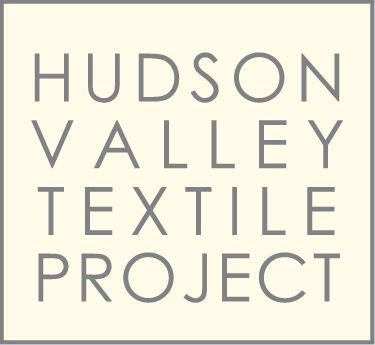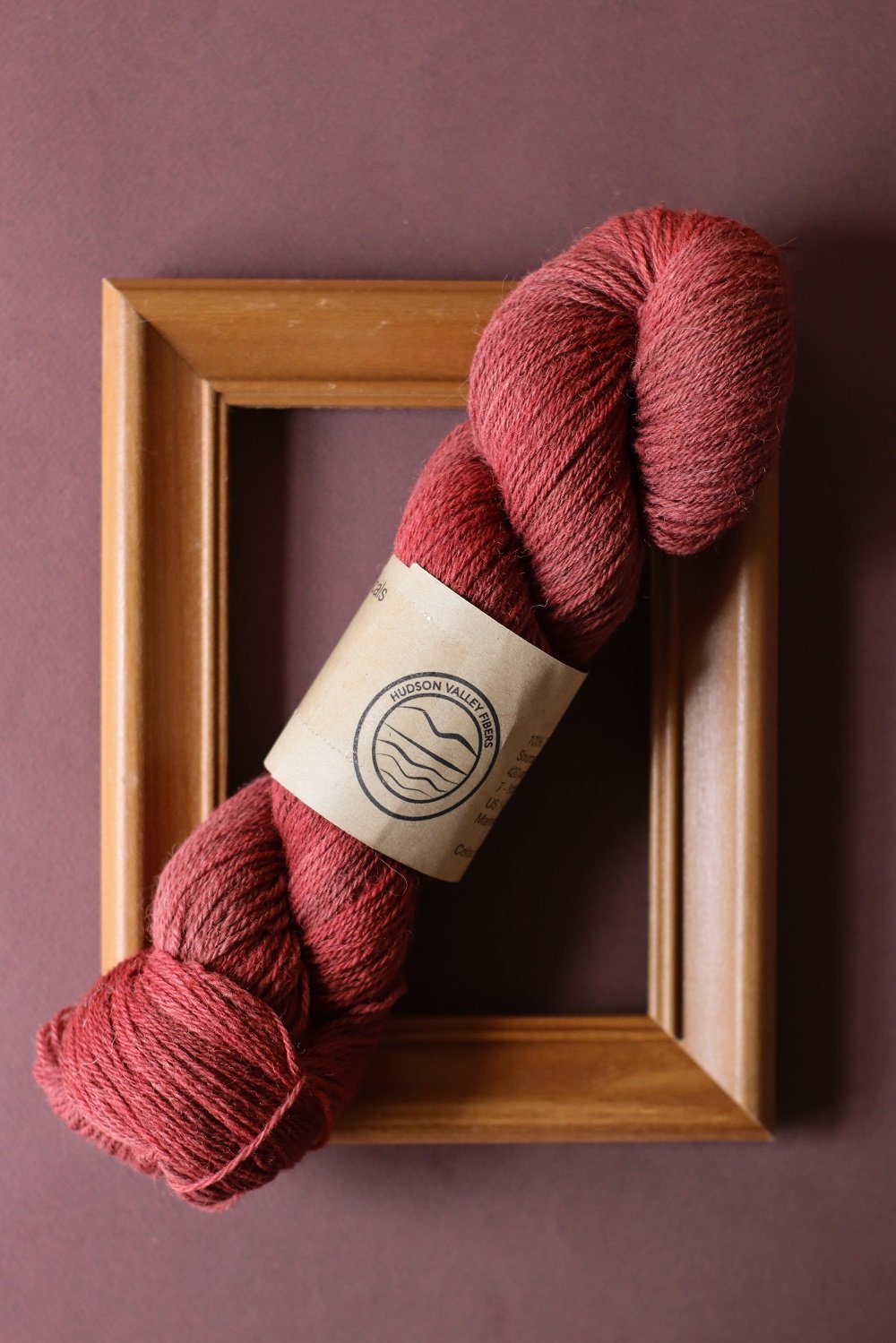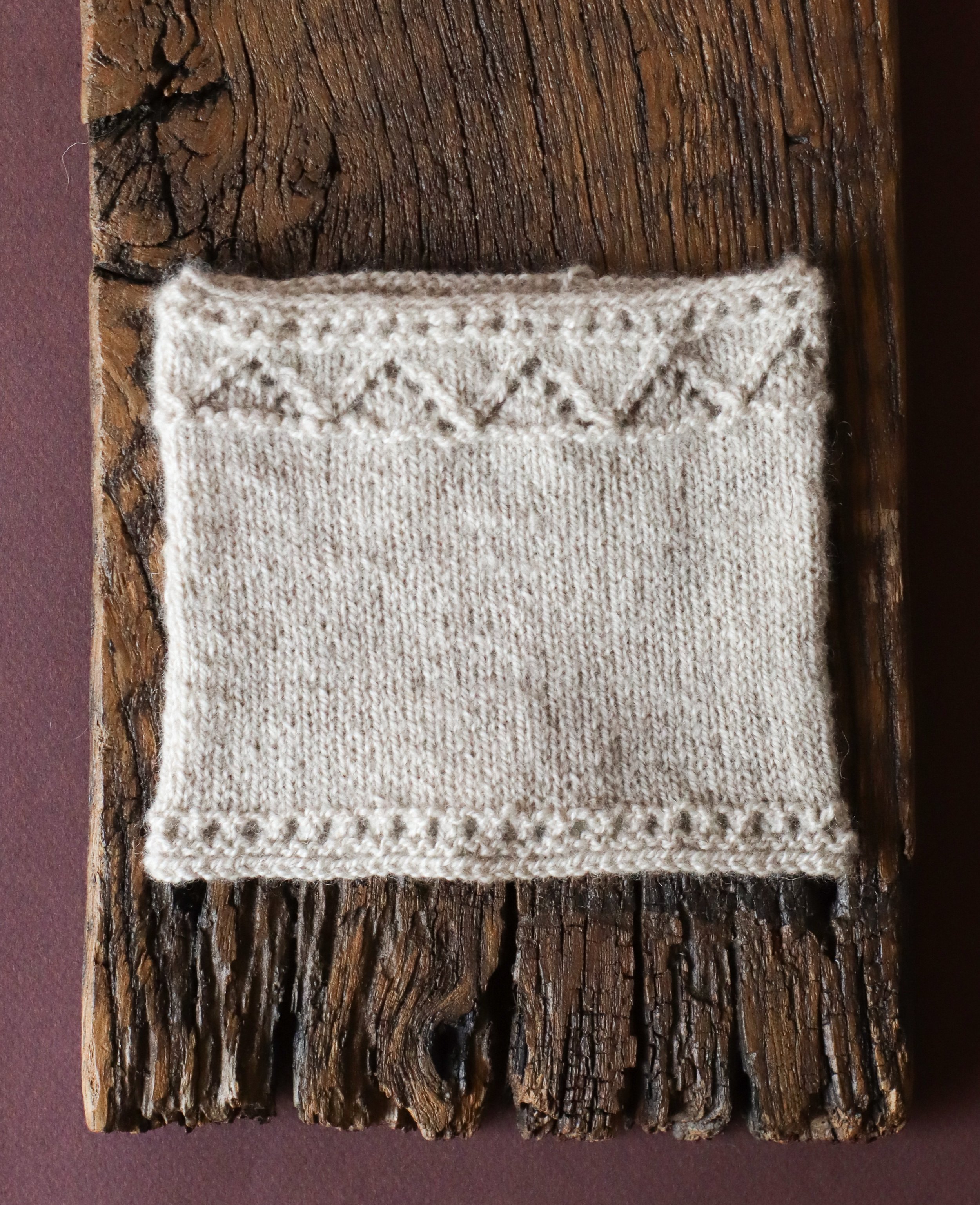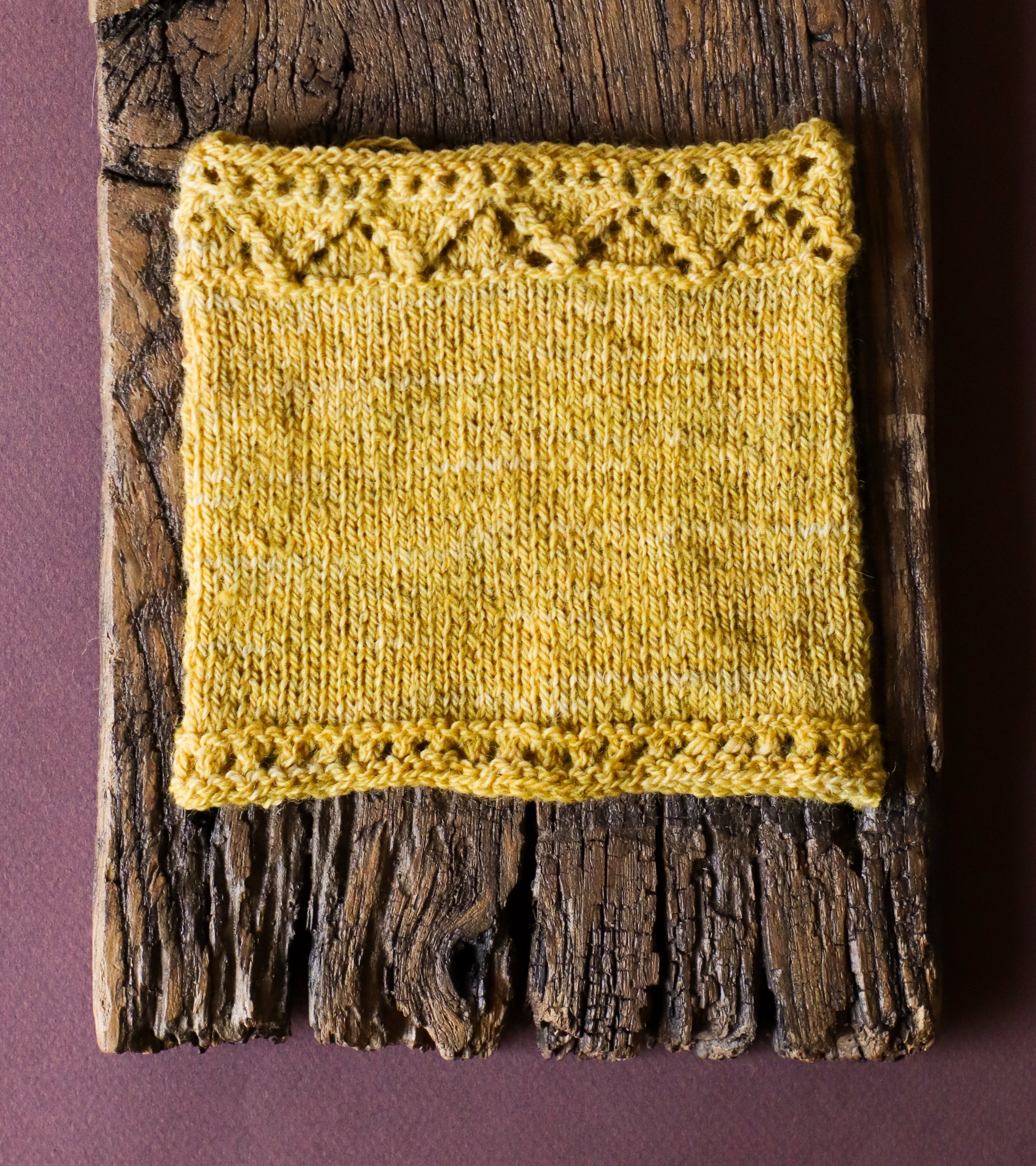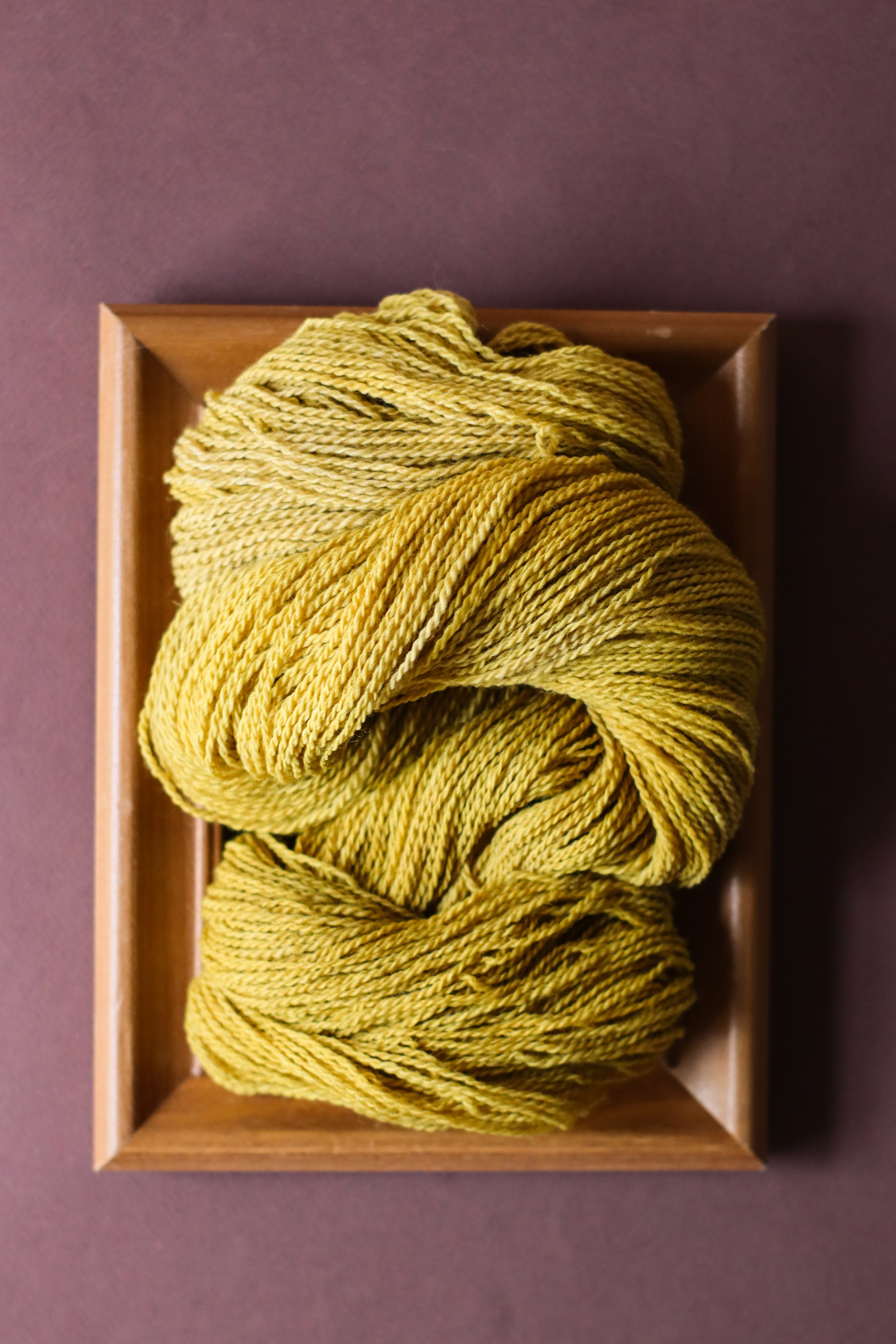Foliage Forager Sock Yarns
If you’ve gotten your hands on a copy of our first Common Threads publication, you’re probably ready to cast on a pair of new socks for the season: Mary Anne Benedetto’s Foliage Forager socks! These socks are beautifully crafted, with details like a carefully turned cuff and squishy ridges along the top of the sock for added padding against the top of your boot.
Here are a few tips from our team for how to have the best success with this sock—and choose yarns from your own stash or from our recommendations to get great results!
Some Tips for Foliage Forager:
When casting on, don’t be surprised if your cuff seems a little big! Remember, it will fold over at the top, doubling the thickness and giving you extra cushiness against the top of a higher boot. You decrease right after you begin the leg.
Sock yarn thickness can really vary your finished sock fit. Take the time to work up a gauge swatch in the round to make sure your finished sock will fit after washing and blocking. We cast on each of our swatches for Common Threads as if we were knitting the smallest size, which made for perfect in-the-round swatches.
Get to know the great non-superwash yarns we’ve recommended for this pattern!
Hudson Valley Fibers Bear Mountain Sock
100% NY Dorset Wool
Fingering, 3-ply, 420 yds / 100 g
Featured in colorway Monarda
This yarn is used in the sample from the designer, and is 100% New York made! The Dorset fiber (a rarity in New York) comes from a small farm in the southeastern part of the state, then travels to Battenkill Fiber Mill in Greenwich, NY to be spun, and to Green Matters Natural Dye Co. in Pennsylvania to be botanically dyed.
The Fleece and Fiber Sourcebook indicates that while Down breed sheep (like Hampshire, Suffolk and Dorsets) are popular to raise, they’re not often raised for wool, so it’s exciting to be able to highlight the production of a fiber-quality Down breed in this pattern.
Down fibers are especially elastic due to their tight crimp, and have extra resistance to felting—just in case your socks accidentally wind up in the washing machine. For those who like numbers, this wool is typically estimated at a 25-29 micron count, making it a good match for knitters with less sensitive feet. Even if you can’t wear it directly next to skin, the fabric presents other possibilities at a similar gauge for beautiful colorwork in botanically dyed hues. As a pair of Foliage Forager socks, these are a cozy and durable layer for Autumn!
Read more about this particular yarn on page 16 of Common Threads.
60% American Cormo, 40% Clean Cashmere (Cashgora)
Fingering weight, 2-ply, 200 yds / 50 g
Swatched in colorway “Natural Oat” on US 1 (2.25 mm)
This is a surprisingly great partnership of fiber and pattern! While cashmere has a reputation of being delicate, combining this luxury fiber with ultra-squishy Cormo wool does just the trick in strengthening it up.
After washing, the cashmere blooms to create a cohesive fabric that will certainly be warm—ideal for curling up by the fire in bed with a book after a long day out of doors in the snow. Cormo, one of our favorite bouncy wools, adds a bit of strength, but these socks are meant to be savored. Clean Cashmere is a co-op of various farms throughout the USA, including HVTP member and co-founder Christine McBrearty-Hulse’s farm in Fly Creek, NY.
Read more about this particular yarn on page 18 of Common Threads.
Birch Hollow Fibers Sojourner Sock
60% US Sourced, Non-SW Merino wool , 30% NY Romney, 10% Nylon
Fingering, 3-ply, 400 yds / 100 g
Swatched in colorway “You Can’t Catch Me, I’m the Gingerbread Man” on US 1 (2.25 mm)
This yarn features US Sourced Merino Wool, partnered with Romney raised right here in New York state. The 10% Nylon addition is perfect for a little added strength and stretch (in case you’re not ready to go fully no-nylon quite yet). We particularly love how each stitch in the swatch was clean and crisp, even before blocking, and this is a great non-superwash choice for sock knitters who like the feel of many ‘standard’ commercial sock yarns. Milled at Battenkill Fibers in New York and hand-dyed in Robin Guy’s studio with a palette of beautiful colors, you’ll be watching her shop for more!
Read more about this particular yarn on page 18 of Common Threads.
100% Wool (Cormo, Merino and Romney)
Heavy fingering, 2-ply, 375 yds / 100 g
Swatched in colorway “Yellow Curtains” on US 1.5 (2.5 mm)
We knit this at a slightly tighter gauge than the yarn recommends—a good practice with any 2-ply sock yarn—and the finished result is beautiful, with slightly rustic stitch textures throughout. Cormo and Merino, which have a buttery soft hand and slightly matte finish, give the skein an almost cottony feel, but the Romney shines through when the knitting is complete! The nuance of naturally dyed colors will help your socks shine.
Read more about this particular yarn on page 18 of Common Threads.
80% White Dorset, 10% White Corriedale, 10% Gray Romney
Fingering, 3-ply yarn, 420 yds / 100 g
Swatched in colorway “Pine” on US 1.5 (2.5 mm).
At The Woolly Thistle, crafters have long been able to get their British fiber fix from the curated selection Corinne Tomlinson has cultivated for her New Hampshire based, online business. Recently, they’ve released their first custom yarn, spun in New York and featuring a clever blend of durable, yet soft, fibers. This is a very classic, rustic sock yarn and is not for the faint of heart (or foot), but we challenge you to find a more durable finished fabric! Rambler stands by its name and will carry you far without giving out.
Read more about this particular yarn on page 18 of Common Threads.
Find the Foliage Forager pattern only in Common Threads — digital or print edition.
photo by Jenn Bakos for the HVTP
